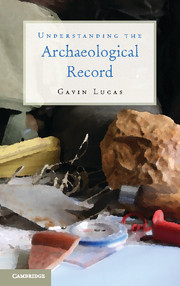6 - Archaeological Interventions
Published online by Cambridge University Press: 05 June 2012
Summary
In the previous chapter, I explored the nature of archaeological entities and touched on the issue of scientific realism. Because no entities would seem to be observer independent, whether theoretical entities like electrons or observable entities like pots, the debate is somewhat sterile. More significant, though, not only are entities observer dependent, but also there are strong grounds for accepting that they are actually constituted through the very practices of science; Karen Barad called this agential realism (Barad 2007). Latour would call it constructivism – but constructivism understood in a very special sense (Latour 2003). It is not that we make up reality; rather, reality is constructed through the very interactions of scientists, their equipment, and various bits of matter. Indeed, as Latour puts it, the more or better constructed, the more real. I think we can make the same arguments for archaeology.
Let me give an example; to late-nineteenth- and early-twentieth-century British archaeologists, it was believed that prehistoric houses consisted of pits dug into the ground. These so-called pit dwellings were observed and reported on in many excavations and exhibited a variety of forms, whereas their identification seemed heavily supported by classical sources (Evans 1989b: 438). The recognition of post-built structures, though not unknown, was not widely appreciated until after a German archaeologist, Gerhard Bersu, a refugee to Britain on the advent of the Second World War, brought German methods of quasi-open-area excavation to a British Iron Age site. Bersu's excavation methods – that is, his mode of intervention, resulted in a gestalt change in the perception of prehistoric settlements. Subsequently, post-built structures became widely acknowledged, but more important, the features previously interpreted as pit dwellings for the previous century became something else – quarry pits, rubbish pits, natural hollows, and so on. This is a good example of how archaeological reality can change in relation to intervention; pit dwellings worked for a long time, but as soon as archaeologists changed their mode of intervention, they ceased to work.
- Type
- Chapter
- Information
- Understanding the Archaeological Record , pp. 215 - 257Publisher: Cambridge University PressPrint publication year: 2012



